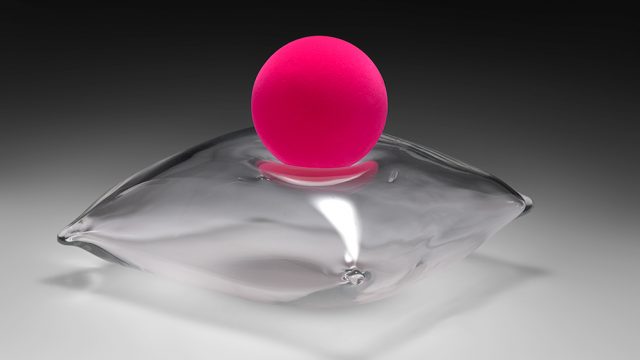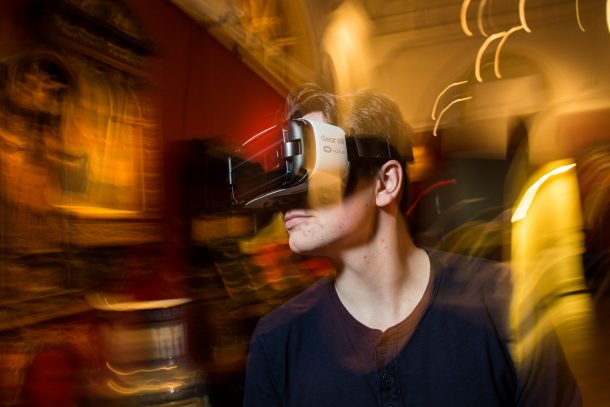
Last weekend as part of the V&A Samsung Digital Classroom, we invited in Rachel Derbyshire of ChroniclesVR to run a workshop in creating virtual reality experiences. The students who came along created 360 degree photos of the museum, took 3D scans of objects in the gallery and then made an app to run on the Samsung Gear VR. While Rachel was in the museum, we thought that it would be a good idea to ask her about how she came into the industry, the future for museums and VR and how young people can get in on the act while the technology gains some mainstream traction.
How did you find your way into working with virtual reality? It’s such a new technology, it must have been quite a big leap of faith.
It was a pretty big leap of faith. I’d quit my job to start working freelance and whilst doing that, I was also working on my postgraduate study. Around about the same time, the Oculus Rift Kickstarter campaign happened and started trending online, in terms of the gaming community it was a case of, “it’s finally here”! It got tons of hype and I thought, this is going to be amazing for gaming. I followed it and finally got my own which was the first developer kit which is almost 2 years old now, and the technology feels so clunky because things have moved on so far and so fast since then. Once I got it, I realised that actually. this is pretty immersive and there are so many other applications that this could be used for. So I decided, I want to get involved in this. There is so much future potential in it. To me, and to lot of other people, we realised it was a new medium to work with. The last time we had a truly new medium was video gaming or film, so it seemed to me that it was too good an opportunity to not get involved.

So what was your postgraduate study?
It was in fine art. My undergraduate degree was in design, web and digital, and there were lot of elective models so I was jumping into new skills and exploring lots of different areas.
What projects have you completed or are working on at the moment?
Most of our projects are under NDAs at the moment but the Hancock Museum was our first big one, where we 3D scanned artefacts and then recreated a historical setting for the Oculus Rift. It was shown in the galleries and it was made available in Oculus Share, which is their online platform for content. Our next project was for the local council and we were recreating ships on the Tyne, essentially recreating industry that was lost. Although it never got past the development stage, we had a lot of fun creating the concept artwork and models. We’ve done consultation for events too and have just done something for the Edinburgh Fringe Festival, so if you go along this year they are having a VR showcase.
Like comedy gigs complete with hecklers in VR?
They are doing quite a lot of things which run for the length of the festival, there is going to be comedy, gaming, 360 video and a whole bunch of other exciting stuff.
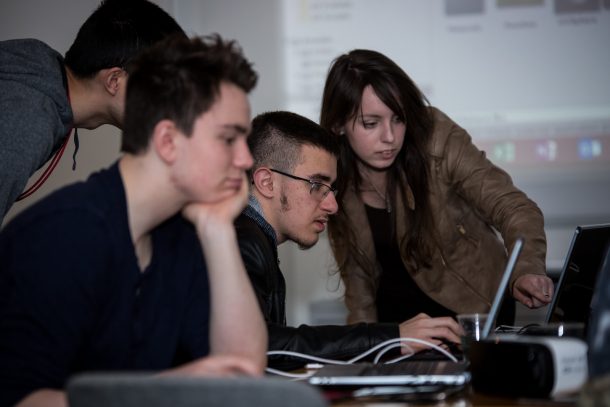
Photo Credit: Vianney Le
Do you have any tips for young people thinking about study or work?
Education is important but practical experience is even more important, even if it is independently gained. I’ve learnt so much more by going into the workplace and going it alone, even when you fail, you learn something new. When you go in to working for an employer, you are on their time which is why it is so key when you are student, to try as much as you can because you have nothing to be scared of in terms of failing. Especially if it is your own work and you have gone out there and just done it. If it is your dissertation the obviously try not to fail if you can!
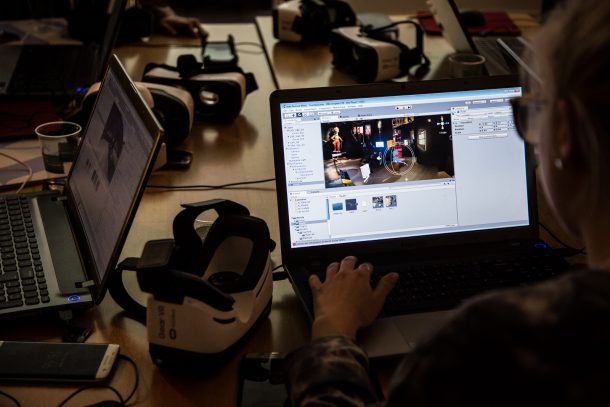
On the technical side of things, what are some quick and easy ways that people can start to play about with creating their own VR experiences?
Taking spherical pictures is the quickest way, you can pop that straight into the phone and there are lots of 360 players out there, such as on Facebook and YouTube. There are also 360 cameras that can speed that process up, some range from a couple of hundred pounds to several thousands but you can just use your mobile phone to create 360 photos. Some can take full film which means that you can capture 360 footage of live events. That’s the quickest way to start making something to be used in VR. Once you get that, you can start to use lots of other skills, like game design, animation and directing to open up the possibilities.

In terms of museums and galleries, what do you think are some of the biggest opportunities with VR?
VR is so new and fresh at the moment that there is a chance to bring in young people, because a lot of headsets aren’t out there and haven’t become commonplace yet. They can form part of an exhibition and create a centrepiece experience that can pull in crowds and potentially create some revenue. Some VR exhibitions have been done almost like an arcade style installation. Of course, it could also allow you to visit the archives of the museum, those things you haven’t got the capacity or space to put on show or that you can’t open up to the public for other reasons. If you create an experience for it in VR then you can show it in your museum or you can show it on the other side of the world without any other risks to it.
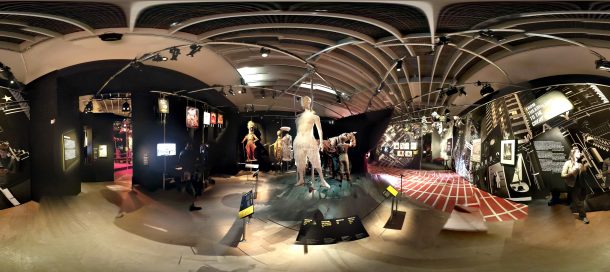
And to wrap up, do you have any favourite objects or galleries at the V&A?
I do love the Cast Courts – it has some very close links to VR, in many ways it is a simulation of a real space, but it is so immersive. It is the idea that the casts are unique in themselves but they also have the added histories of the original object and I quite like that. It keeps building a new history. For example, Trajan’s Column in the middle of the gallery – it had to be cut in half in order to fit it into the gallery. That on its own is interesting, you couldn’t do that to the original, but working with copies gives you the freedom to do that and to breathe a new life into it and new way of looking at it.

The Samsung Digital Classroom is a new programme for 16 – 19 year olds which offers hands on, practical workshops exploring the latest in digital art and design. You can find more of our Samsung Digital Classroom Sessions online here and follow blogs about the sessions through News from the Learning Department.


